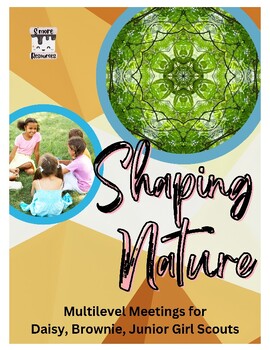Shaping Nature Math & Science Curriculum for Daisy, Brownie, Junior Girl Scouts
Smore Scout Resources
21 Followers
Grade Levels
K - 5th
Subjects
Resource Type
Standards
CCSSK.G.A.2
CCSS3.G.A.1
CCSS4.G.A.3
NGSS3-LS4-2
Formats Included
- PDF
Pages
5 pages
Smore Scout Resources
21 Followers
Description
Shaping Nature, Part 1 of my Patterns in Nature Guide, will help you take math and science outside of the classroom and into scouting. During an hour-long meeting, multilevel (and single level) troops will enjoy engaging in practical outdoor activities that integrate geometry topics for Daisy, Brownie, and Junior scouts. Don't end with a single session, either. To earn badges in the STEM, art, and outdoor categories as well, make use of the useful links and suggested activities.
Total Pages
5 pages
Answer Key
Does not apply
Teaching Duration
1 hour
Report this resource to TPT
Reported resources will be reviewed by our team. Report this resource to let us know if this resource violates TPT’s content guidelines.
Standards
to see state-specific standards (only available in the US).
CCSSK.G.A.2
Correctly name shapes regardless of their orientations or overall size.
CCSS3.G.A.1
Understand that shapes in different categories (e.g., rhombuses, rectangles, and others) may share attributes (e.g., having four sides), and that the shared attributes can define a larger category (e.g., quadrilaterals). Recognize rhombuses, rectangles, and squares as examples of quadrilaterals, and draw examples of quadrilaterals that do not belong to any of these subcategories.
CCSS4.G.A.3
Recognize a line of symmetry for a two-dimensional figure as a line across the figure such that the figure can be folded along the line into matching parts. Identify line-symmetric figures and draw lines of symmetry.
NGSS3-LS4-2
Use evidence to construct an explanation for how the variations in characteristics among individuals of the same species may provide advantages in surviving, finding mates, and reproducing. Examples of cause and effect relationships could be plants that have larger thorns than other plants may be less likely to be eaten by predators; and, animals that have better camouflage coloration than other animals may be more likely to survive and therefore more likely to leave offspring.





